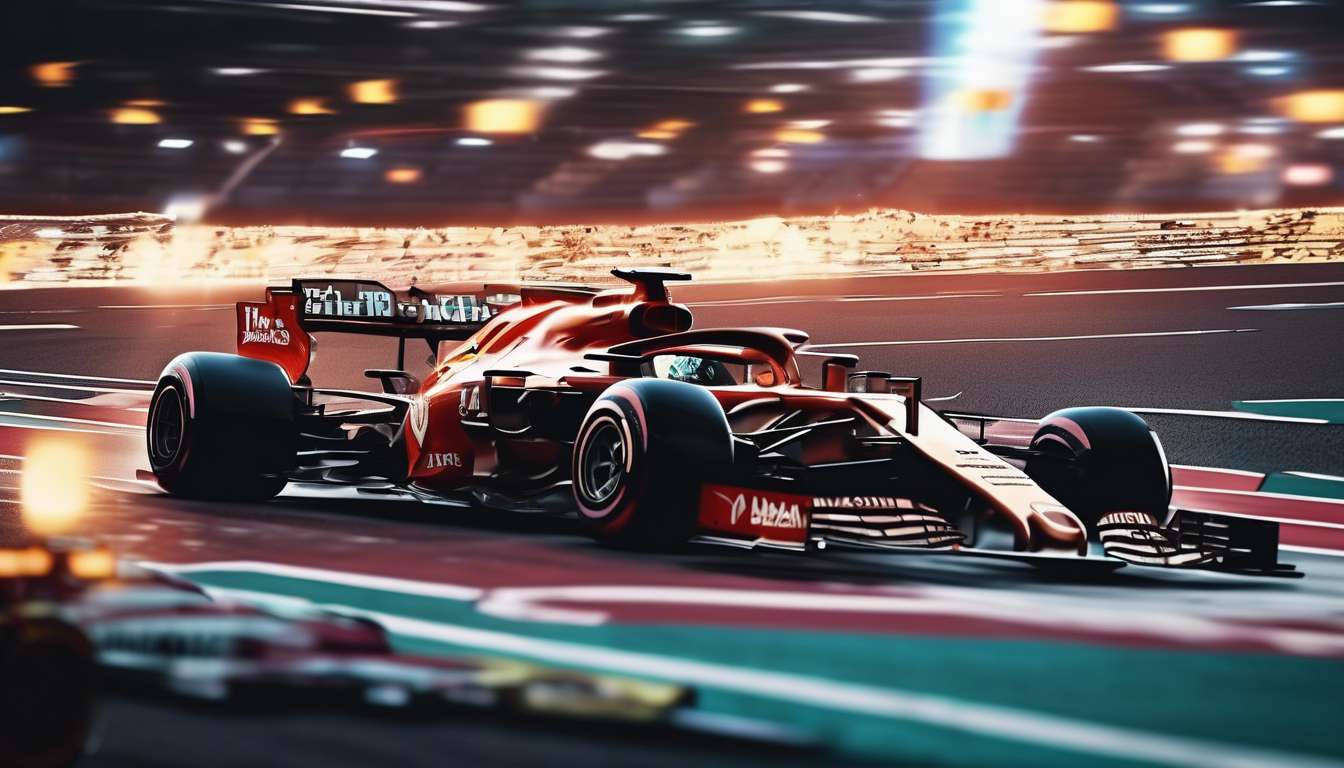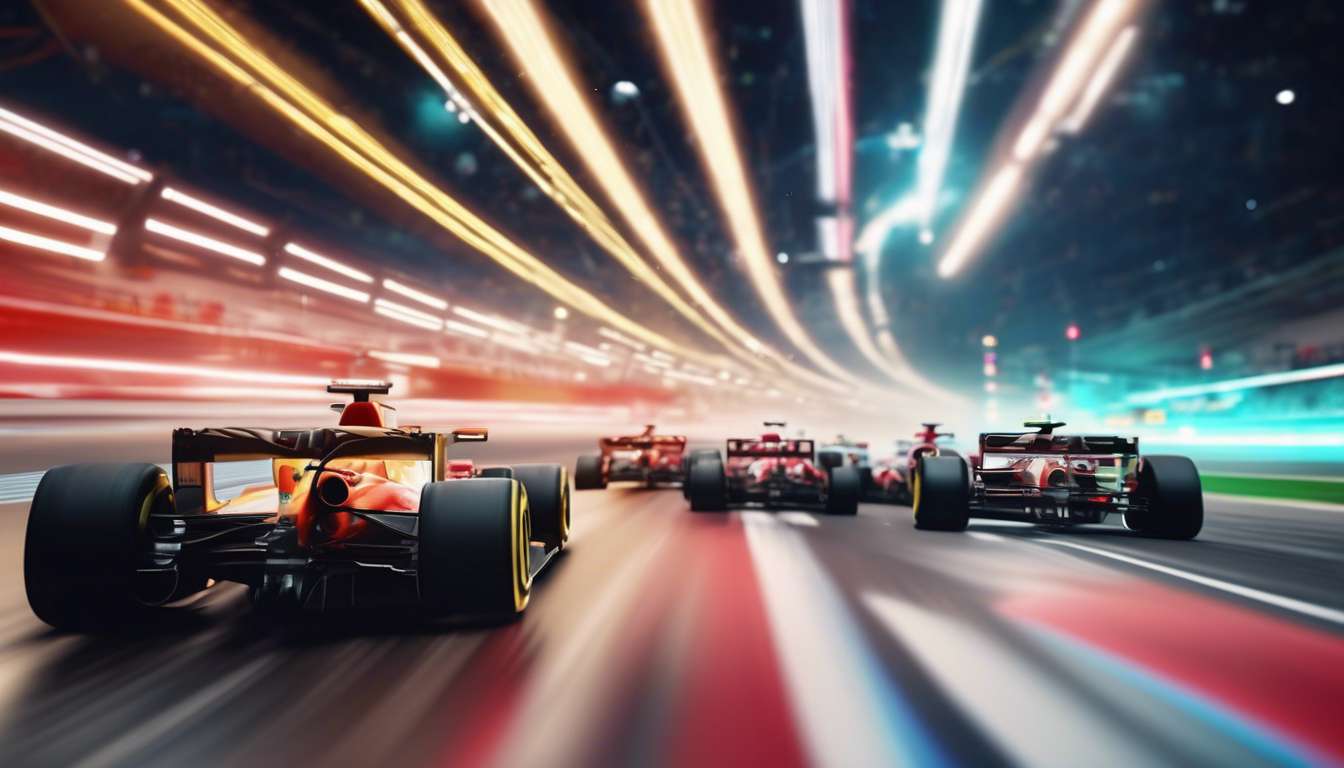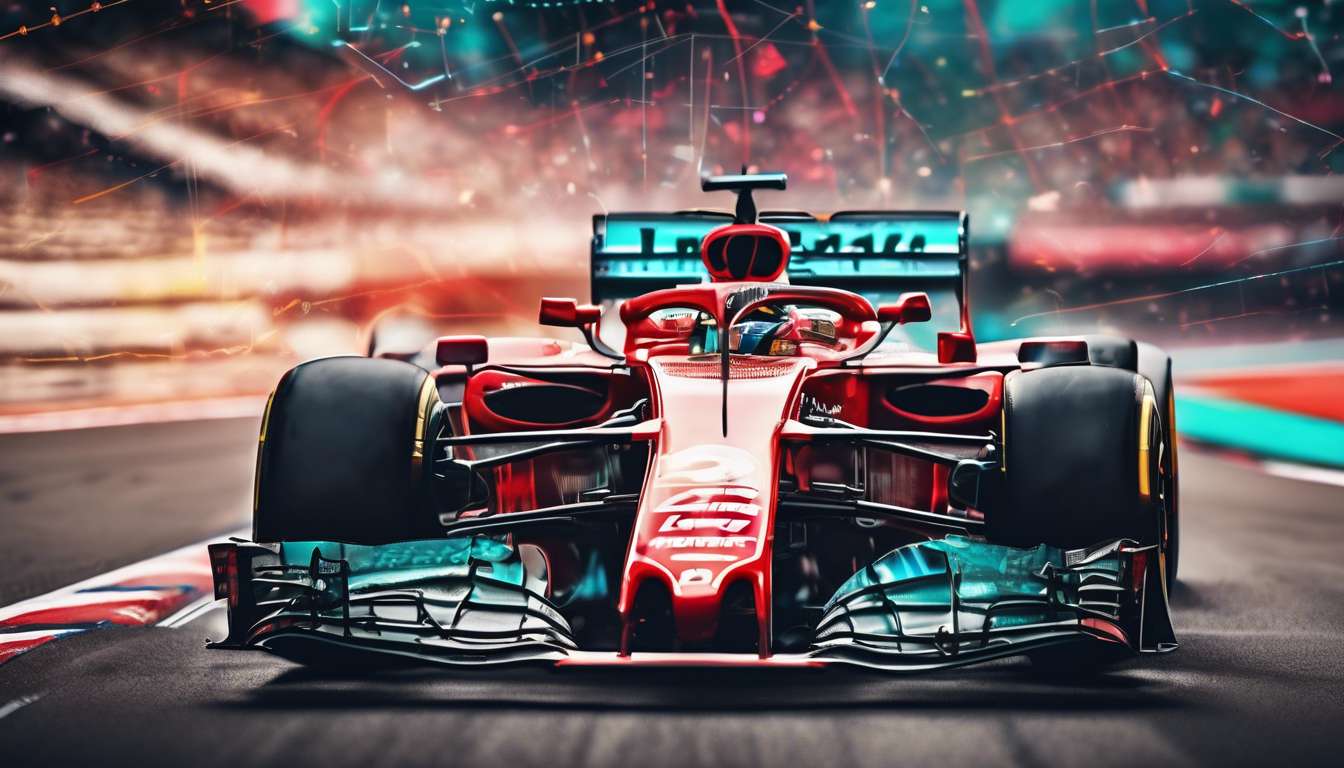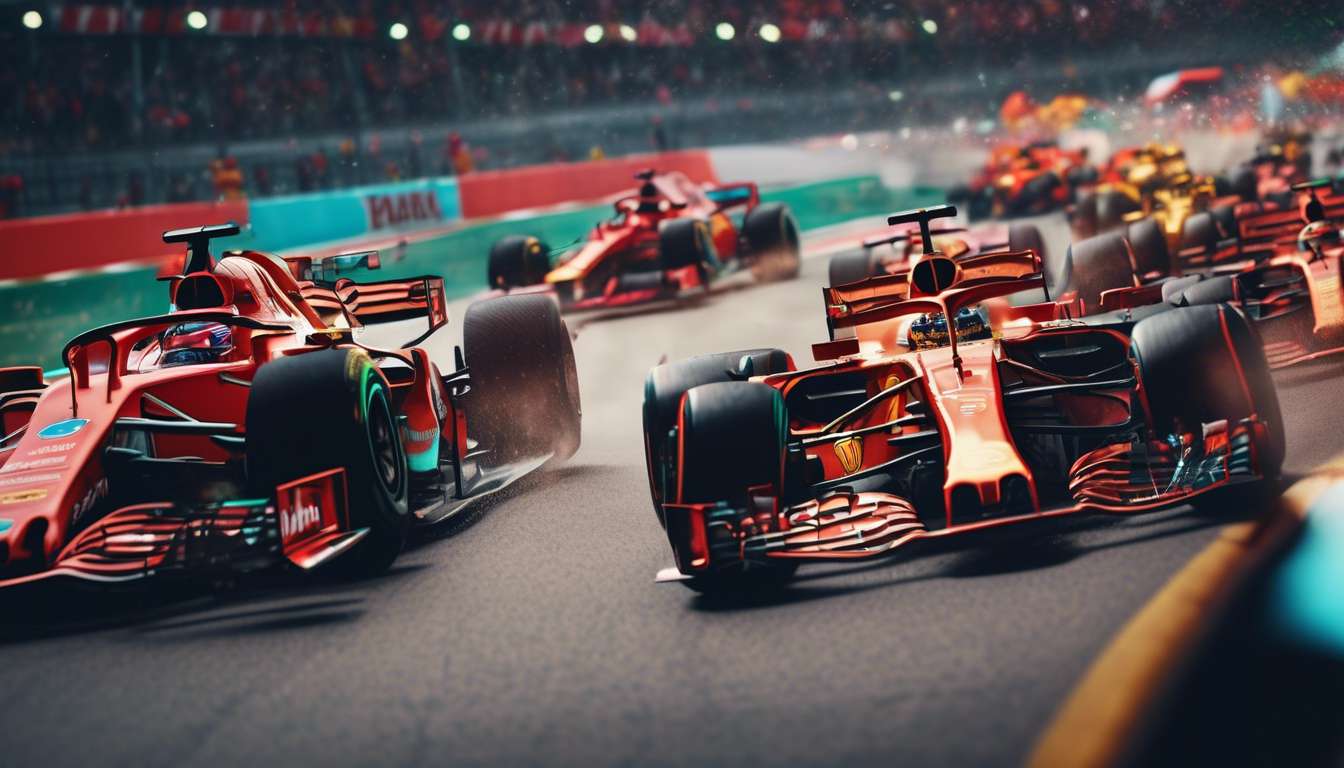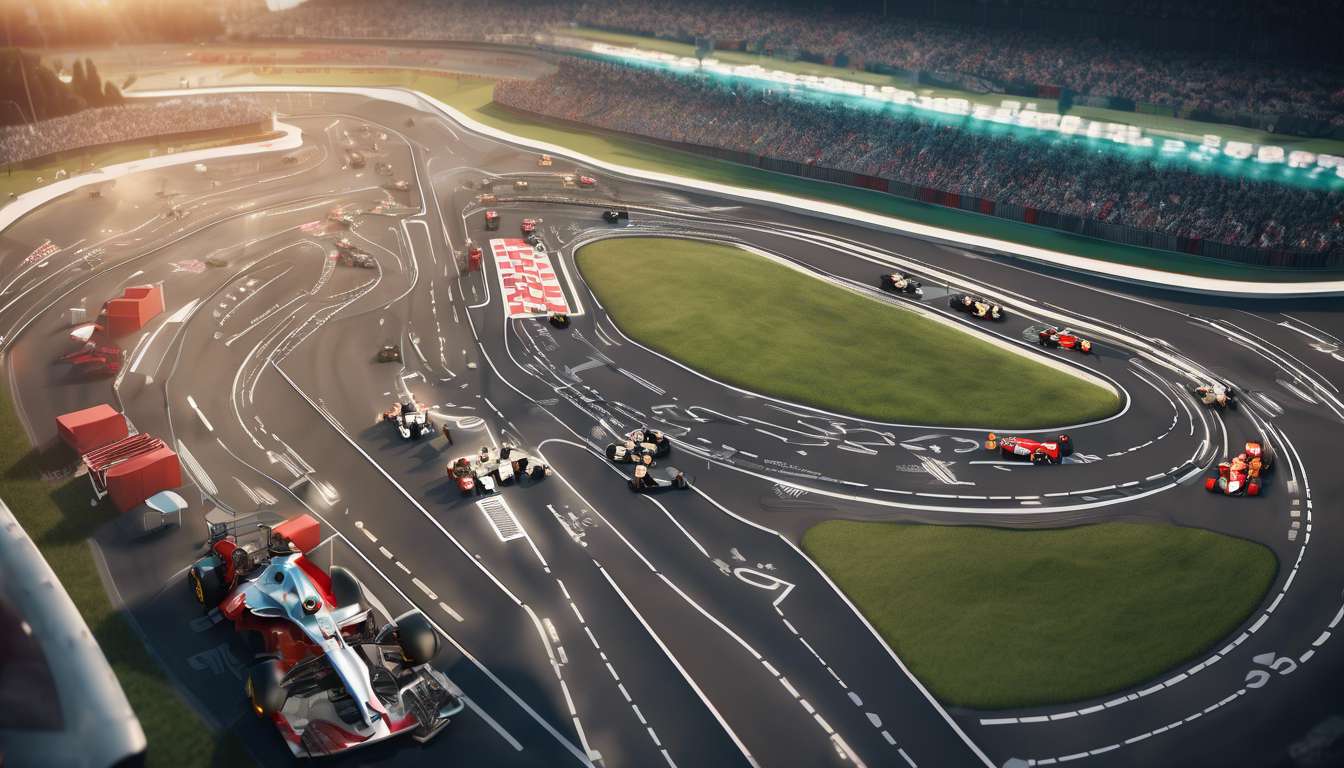In the fast-paced world of Formula 1, technology revolutionizes both the races and the way we predict their outcomes. As avid fans and analysts, we’ve seen a dramatic shift in how data and technology influence betting predictions.
Gone are the days when gut feeling and basic statistics were our only tools. Now, advanced algorithms, real-time data analytics, and machine learning have become our trusted allies in navigating the complex landscape of F1 betting.
Below are the top eight ways technology is reshaping our approach to making informed predictions:
-
Sophisticated Simulation Models
These models replicate race conditions to provide realistic scenarios that enhance prediction accuracy. -
AI-Driven Insights
Artificial intelligence dissects driver performance, offering deeper analysis that was previously unavailable. -
Real-Time Data Analytics
The ability to analyze data as it happens allows for up-to-the-minute insights that can drastically change betting strategies. -
Advanced Algorithms
These algorithms process vast amounts of data to identify patterns and trends that humans might miss. -
Machine Learning
By learning from previous races and outcomes, machine learning systems improve their predictive capabilities over time. -
Enhanced Driver Performance Metrics
New technologies provide detailed metrics on driver performance, offering a more comprehensive understanding of potential race outcomes. -
Weather and Track Condition Models
Advanced models predict how weather and track conditions might affect the race, adding another layer of precision to predictions. -
Interactive Data Visualization
This allows bettors to easily interpret complex data sets and make more informed decisions.
As we explore these technological advancements, we gain a deeper understanding of how they enhance our strategies, making the exhilarating world of Formula 1 betting even more dynamic and engaging.
Simulation Models
Simulation models play a crucial role in enhancing the accuracy of our Formula 1 betting predictions by replicating race conditions and outcomes. These models allow us to feel like we’re part of the pit crew, transforming us from spectators into participants in crafting precise predictions.
Integration of Machine Learning:
- By integrating machine learning, we refine our simulations.
- The models constantly learn from past races to anticipate future performances.
- These intelligent systems sift through vast amounts of data, identifying patterns that we might miss.
- It’s akin to having a seasoned race engineer guiding us through each betting decision.
Real-time Analytics:
Real-time analytics keep us connected to the pulse of every race, offering insights as they happen. This immediate feedback ensures that our models remain accurate and relevant, allowing us to adjust our strategies instantly.
Together, these technologies create a shared experience, enhancing our understanding and enjoyment of Formula 1 betting.
AI Insights
AI insights empower us to delve deeper into the complexities of Formula 1 racing, providing unprecedented precision in our betting predictions. Together, we harness the power of Machine Learning to analyze vast amounts of data, drawing connections that might elude even the keenest human observers. These insights help us feel like we truly belong in the fast-paced world of F1 enthusiasts, where every detail matters.
Simulation models allow us to create virtual replicas of races, giving us the ability to test different scenarios and outcomes before they happen in real-world events. By doing so, we can better anticipate how certain variables might influence the race outcomes, such as:
- Weather conditions
- Driver performance
It’s like having a crystal ball, but one grounded in data-driven reality.
With AI, we’re not just spectators; we’re active participants in predicting the thrilling outcomes of each race. This shared journey of discovery and excitement strengthens our connection to the sport.
Real-Time Analytics
By leveraging real-time analytics, we can instantly process live race data to refine our betting strategies as events unfold. This capability makes us feel more connected to the race, allowing us to make informed decisions alongside fellow enthusiasts. The thrill of watching the cars zip around the track is heightened when we know our predictions are backed by cutting-edge technology.
Utilizing simulation models, we visualize various race scenarios, helping us anticipate potential outcomes. These models, combined with machine learning, give us the ability to adapt quickly. As the race progresses, we can adjust our predictions based on up-to-the-minute data, ensuring we stay ahead of the curve.
Real-time analytics empowers us to not just witness the action but actively engage with it. We’re part of a community that values precision and insight, relying on technology to elevate our understanding.
Together, we embrace the future of Formula 1 betting, where data drives our decisions and strengthens our connection to the sport.
Advanced Algorithms
Harnessing advanced algorithms, we enhance our betting predictions by analyzing vast datasets with unprecedented speed and accuracy. As Formula 1 enthusiasts, we know how crucial it is to feel part of the action, and these algorithms bring us closer to the race than ever before.
By integrating simulation models, we’re able to anticipate potential race outcomes and refine our predictions seamlessly. This approach not only fosters a sense of community among us but also elevates our understanding of the sport.
Our use of real-time analytics ensures we remain adaptable, reacting to live data as it unfolds during races. This dynamic approach allows us to adjust our predictions with precision, ensuring we’re always in the know.
While machine learning plays a significant role, it’s the synergy between these advanced algorithms and our passion for Formula 1 that truly enhances our betting experience. Together, we harness technology to deepen our connection to the sport we love.
Machine Learning
Our Approach to Formula 1 Betting Predictions
Our team embraces the transformative power of machine learning to refine our Formula 1 betting predictions with unparalleled accuracy. By integrating sophisticated simulation models, we create a community of enthusiasts who trust and rely on our insights.
Machine Learning and Data Processing
We harness machine learning to process vast amounts of data, uncovering patterns that might elude the human eye. This enables us to predict race outcomes with greater precision, bringing us all closer to the thrill of the sport.
Real-Time Analytics
In our quest for precision, real-time analytics play a crucial role. They allow us to adapt our predictions as conditions change, ensuring we’re always a step ahead.
- Track conditions
- Weather fluctuations
Our models adjust to provide the most current insights. This dynamic approach fosters a sense of belonging among our community, as we all share in the excitement of making informed choices.
Community and Technology
Together, we leverage technology to deepen our connection to Formula 1, enhancing our experience and understanding of the races.
Driver Metrics
To enhance our predictions, we analyze a multitude of driver metrics, focusing on performance indicators like lap times, consistency, and adaptability.
We delve into these metrics using:
- Simulation Models
- Machine Learning algorithms
These tools empower us to understand a driver’s strengths and weaknesses more comprehensively.
By leveraging Real-Time Analytics, we track drivers’ performances across various circuits, tailoring our betting strategies based on their evolving data.
Our community thrives on shared insights. By focusing on driver metrics, we create a collective understanding of what makes a driver excel or falter.
We embrace technology to provide an edge in predictions, ensuring we’re not just spectators but active participants in the thrilling world of Formula 1.
With Machine Learning, we detect patterns that might not be immediately obvious, while Simulation Models offer scenarios for future races.
Together, these tools help us refine our predictions, making us feel more connected and informed as a community that shares a passion for precision and excitement in F1 betting.
Weather Models
Weather conditions can significantly impact race outcomes, so we incorporate advanced weather models to enhance our betting predictions. Understanding the dynamics of weather is crucial for all of us who are passionate about Formula 1.
By utilizing simulation models, we can predict how different weather scenarios might play out during a race. These models help us feel more connected to the sport we love, as we better understand the elements affecting our favorite drivers.
Moreover, machine learning algorithms analyze vast amounts of weather data to identify patterns and trends. This technology allows us to anticipate changes, providing a strategic edge in our betting predictions.
We all appreciate the excitement that comes with being part of a knowledgeable community, and these insights strengthen that connection.
Real-time analytics further refine our predictions by continuously updating us with the latest weather information.
Together, we can make informed decisions, enhancing our collective experience and deepening our shared passion for Formula 1 betting.
Data Visualization
Leveraging Data Visualization Techniques
We transform complex data sets into intuitive graphics, making it easier to interpret trends and patterns in Formula 1 betting predictions. By presenting data in visually engaging ways, we create a shared understanding among our community, allowing us to make informed decisions together.
Our approach fosters a sense of belonging, as we all navigate through the intricate world of F1 betting.
Utilizing Simulation Models
We utilize simulation models to predict outcomes, tapping into machine learning for enhanced accuracy. These models process vast amounts of information, and with real-time analytics, we gain immediate insights, keeping us ahead of the curve during races.
Benefits of Visualization
Visualizations allow us to:
- See data at a glance
- Highlight crucial variables that could affect race outcomes
Creating a Dynamic Experience
In doing so, we create a dynamic, interactive experience that not only elevates our predictions but also strengthens our collective engagement with the sport.
As technology evolves, so does our ability to connect through shared insights and experiences.
How has the introduction of electric vehicles in Formula 1 influenced betting predictions?
Electric vehicles in Formula 1 have significantly impacted betting predictions.
They bring a new level of unpredictability to races, influencing odds and strategies. The shift to electric power has forced analysts to reassess traditional metrics, leading to more dynamic and engaging betting experiences.
As fans of Formula 1, we find ourselves eagerly anticipating the outcomes of races, fueled by the excitement and uncertainty that electric vehicles bring to the sport.
What role does team strategy play in affecting betting odds in Formula 1?
Team Strategy and Betting Odds in Formula 1
Team strategy plays a significant role in influencing betting odds in Formula 1 races. Several key factors contribute to this:
- Pit Stop Timing: The decision on when to pit can affect a car’s position and overall race outcome.
- Tire Selection: Choosing the right tires for the conditions can greatly impact performance and speed.
- Race Pace: Maintaining an optimal race pace is crucial for success.
By analyzing historical data and understanding each team’s strengths, we can make informed predictions about race outcomes.
Impact of Strategic Decisions
The strategic decisions made by teams during a race can shift the odds dramatically. Therefore, it is crucial to:
- Stay updated on team dynamics.
- Monitor performance metrics.
These elements are essential for anticipating changes in betting odds and making informed betting choices.
How do tire manufacturers impact the outcomes of Formula 1 races and thus betting forecasts?
Tire manufacturers significantly influence Formula 1 race outcomes and subsequently affect betting forecasts. Their tire compounds and performance levels directly impact:
- Teams’ strategies
- Pit stop timings
- Overall race pace
By providing teams with competitive advantages or disadvantages based on tire specifications, manufacturers play a crucial role in shaping the dynamics of each race.
Understanding how these factors influence outcomes is essential for accurate betting predictions in Formula 1.
Conclusion
In conclusion, technology plays a crucial role in shaping Formula 1 betting predictions. From simulation models to real-time analytics, advanced algorithms, and machine learning, these tools provide valuable insights for bettors.
Key technological tools include:
- Simulation models
- Real-time analytics
- Advanced algorithms
- Machine learning
Additional factors enhancing predictive capabilities:
- Driver metrics
- Weather models
- Data visualization
By harnessing the power of technology, bettors can make more informed decisions and increase their chances of success in the exciting world of Formula 1 betting.




